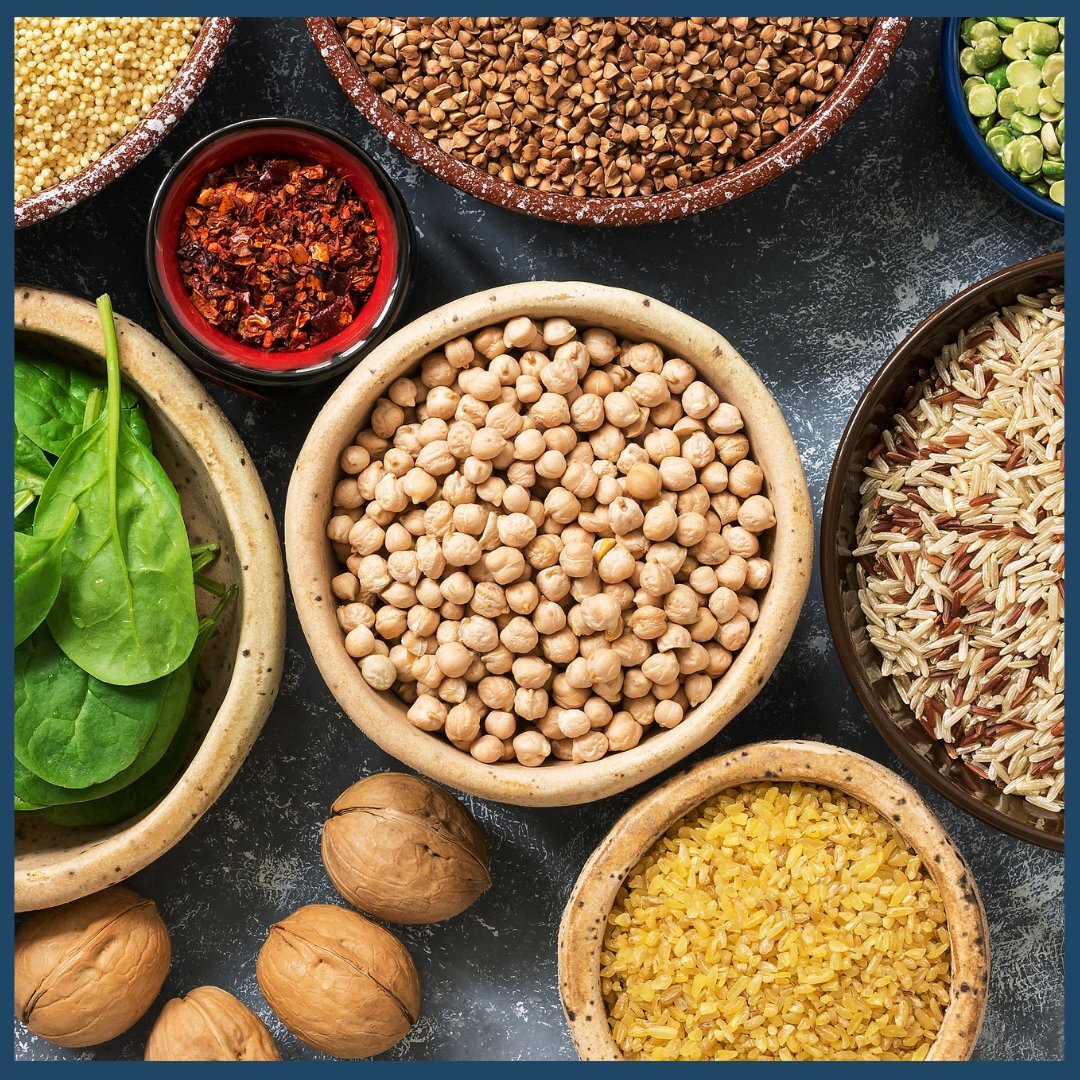Plant-Based Protein
Plant-Based Protein
A Gentle Nutrition Approach
When moving towards a plant-based diet it can be helpful to adopt a gentle nutrition approach and focus on what you can include and add to your diet. Protein will often be raised as something to consider therefore below I’ve included the ‘what’, the ‘why’ and the ‘how’ on plant-based protein.
Protein is a component of every cell in the body, it plays a vital role in repairing your muscles, ligaments skin and hair. It also makes enzymes, hormones and antibodies (defence cells critical for immunity) (1).
Regardless of whether you are trying to “build muscle” it’s important to consume adequate amounts, especially as it helps you to stay feeling satisfied from a meal (2).
Although meat contains more “bio-available” protein, meaning less is needed to easily meet your individual requirements (3), it is still entirely possible to hit these requirements when eating plant-based foods only (4).
There are plenty of delicious sources of plant-based proteins …
Beans, Lentils and Legumes
Soya protein e.g. tofu, milk, yoghurt
Fermented soybeans e.g. tempeh, miso paste
Wheat protein e.g. seitan
Wholegrains
Nuts & seeds (including nut cheese & butters)
Protein-fortified products (5)
The key is to have plenty of variety!
Plant-based proteins, unlike meat and eggs, often do not contain all 9 essential amino acids (must be consumed as the body cannot make them), meaning they are not “complete proteins”(6).
Whilst there a few protein sources that do contain all essential amino acids:
Quinoa
Hemp
Soy (7, 8)
Many don’t – therefore it’s important to eat a wide variety and pair sources that complement each other, like the below:
Lentils + Wholegrain Rice
Beans + Wholegrain Toast
Bean chilli + Wholegrain Rice
Chickpea stew + couscous
Hummus + pitta bread
Rye cracker + nut butter (9)
5 quick ways to add more protein to meals …
1. Add beans and pulses into soups, salads, curries and stir fries
2. Include quinoa – have as a side dish or even use in baking
3. If in doubt – add an egg!
4. Top your porridge, fruit, toast etc. with nut butter
5. Sprinkle on nuts and seeds – on porridge, soups and salads
Seeking variety in our foods allows us to get the most enjoyment out of our meals, whilst providing you with more energy and keeping you satisfied. It also gives us the opportunity to include an abundance of nutrients.
References
(1) Gropper, S.S. and Smith, J.L., 2012. Advanced nutrition and human metabolism. Cengage Learning.
(2) British Nutrition Foundation, 2017. Understanding satiety: feeling full after a meal[online]. British Nutrition Foundation. Available from: https://www.nutrition.org.uk/healthyliving/fuller/understanding-satiety-feeling-full-after-a-meal.html?start=3. [Accessed 5 May 2021].
(3) Bohrer, B.M., 2017. Nutrient density and nutritional value of meat products and non-meat foods high in protein. Trends in food science & technology, 65, 103-112.
(4) Lynch, H., Johnston, C. and Wharton, C., 2018. Plant-Based Diets: Considerations for Environmental Impact, Protein Quality, and Exercise Performance. Nutrients, 10(12), 1841.
(5) Melina, V., Craig, W. and Levin, S., 2016. Position of the Academy of Nutrition and Dietetics: vegetarian diets. Journal of the Academy of Nutrition and Dietetics, 116(12), 1970-1980.
(6) Young, V.R. and Pellett, P.L., 1994. Plant proteins in relation to human protein and amino acid nutrition. The American journal of clinical nutrition, 59(5), 1203-1212.
(7) Mattila, P., Mäkinen, S., Eurola, M., Jalava, T., Pihlava, J.M., Hellström, J. and Pihlanto, A., 2018. Nutritional value of commercial protein-rich plant products. Plant foods for human nutrition, 73(2), 108-115.
(8) Boye, J., Wijesinha-Bettoni, R. and Burlingame, B., 2012. Protein quality evaluation twenty years after the introduction of the protein digestibility corrected amino acid score method. British Journal of Nutrition, 108(S2), S183-S211.
(9) British Nutrition Foundation, 2018. Healthy eating for vegans and vegetarians: Protein[online]. British Nutrition Foundation. Available from: https://www.nutrition.org.uk/healthyliving/helpingyoueatwell/veganandvegetarian.html?limit=1&start=11. [Accessed 5 May 2021].


